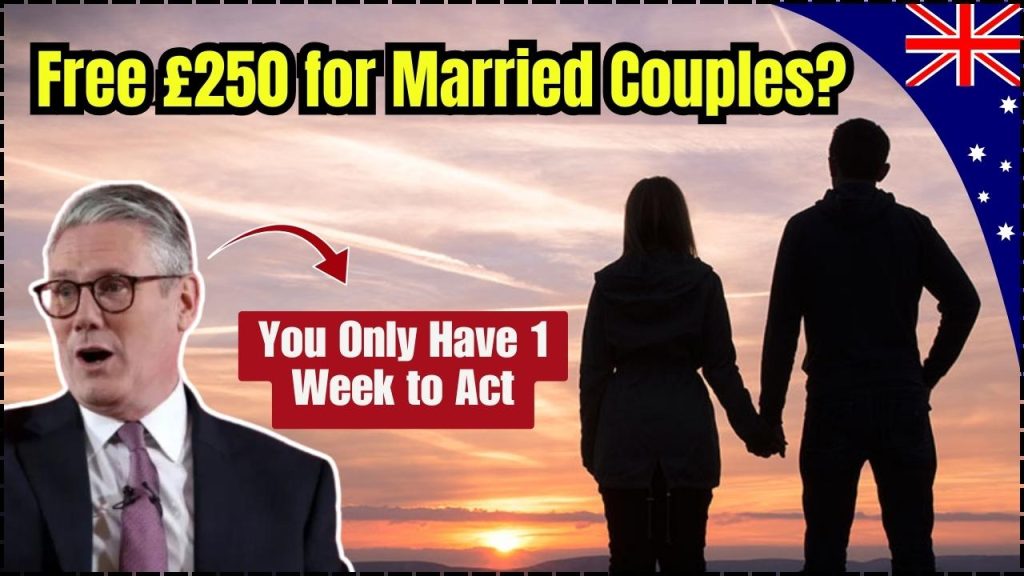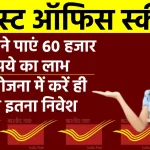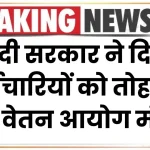£250 for Married Couples: Are you wondering if married couples can really get a free £250 tax break? The answer is YES! But there’s a catch — you only have one week left to claim it. This benefit, known as the Marriage Allowance, is available to millions of eligible couples across the UK. If you haven’t claimed it yet, you might be missing out on hundreds of pounds, and you can even backdate your claim to receive more.

In this comprehensive guide, we’ll walk you through everything you need to know — from how the Marriage Allowance works, who qualifies, real-life examples, step-by-step claiming instructions, professional insights, to frequently asked questions. Our goal is to help you secure every penny you deserve before the fast-approaching deadline.
£250 for Married Couples
| Feature | Details |
|---|---|
| Benefit Name | Marriage Allowance |
| Maximum Annual Saving | £252 per year |
| Backdating Available | Yes, up to 4 previous tax years (max total £1,260) |
| Deadline to Backdate 2020/21 Tax Year | 5 April 2025 |
| Eligibility Criteria | Married/civil partners, one partner earning below £12,570, other earning between £12,571-£50,270 |
| Application Process | GOV.UK |
| Potential Refund | Tax refund directly from HMRC |
| Professional Insight | Useful for low-income households and basic rate taxpayers |
If you’re married or in a civil partnership and fit the income criteria, don’t let this tax-saving opportunity slip away. The Marriage Allowance could give you an instant cash boost of up to £1,260 if you backdate your claim. With the deadline to claim for the 2020/21 tax year looming on 5 April 2025, there’s no time to waste..
What is Marriage Allowance?
The Marriage Allowance is a UK government tax perk designed to support married couples and civil partners financially. Essentially, it allows the lower-earning partner to transfer up to £1,260 of their Personal Allowance to their higher-earning partner. This effectively lowers the amount of income tax the higher earner needs to pay. The result? Up to £252 saved per year!
What’s particularly appealing about this scheme is the ability to backdate your claim for up to four previous tax years if you qualified but didn’t apply. This means couples could receive a cumulative refund of £1,260, a meaningful sum especially in times of rising living costs.
Why is There a Deadline?
The UK’s tax year runs from 6 April to 5 April each year. The deadline to claim Marriage Allowance for the 2020/21 tax year is fast approaching — it’s 5 April 2025. Once this date passes, you permanently lose the ability to claim for that tax year. No extensions. No grace periods.
Given how simple it is to claim and how much money you could potentially save, missing out would be a financial mistake many families can’t afford. The good news is, it takes just a few minutes to apply.
Who is Eligible for Allowance?
Eligibility is straightforward, but let’s break it down to avoid confusion.
Eligibility Criteria for Marriage Allowance:
- Married or in a Civil Partnership:
- You must be legally married or in a civil partnership. Living together without formal legal ties doesn’t qualify.
- Income Thresholds:
- Lower-earning partner: Must have income below the Personal Allowance threshold (£12,570 for 2024/25).
- Higher-earning partner: Must be a basic rate taxpayer, earning between £12,571 and £50,270.
- UK Resident:
- Both partners need to reside in the UK.
- No Higher Rate Taxpayers:
- Anyone earning above £50,270 is not eligible, as they fall into a higher tax bracket.
Real Example: How Much Could You Get?
Let’s paint a clearer picture:
- Emma earns £10,000/year (non-taxpayer)
- John earns £40,000/year (basic rate taxpayer)
Emma isn’t using her full tax-free Personal Allowance, so she can transfer £1,260 of it to John. As a result, John’s income tax bill is reduced by £252 for that year.
Now, imagine they never claimed Marriage Allowance for the past four years. By backdating, they could receive a total refund of £1,260 straight from HMRC. That’s money they might not have known they were entitled to!
How to Claim Marriage Allowance
The application process is simple and hassle-free. Here’s how you can do it:
Step-by-Step Guide:
- Visit the Official Website:
- Navigate to the GOV.UK Marriage Allowance page.
- Check Eligibility:
- Use their quick online tool to confirm you qualify.
- Gather Details:
- Both partners’ National Insurance numbers.
- Identification documents such as a passport, P60, or recent payslip.
- Submit the Application:
- The lower-earning partner applies to transfer their allowance.
- Wait for Confirmation:
- HMRC adjusts the tax code and sends refunds accordingly. Usually, this happens within a few weeks.
Can You Backdate Your Claim?
Absolutely. In fact, backdating your claim is one of the smartest financial moves if you qualify. You can go back up to four previous tax years.
Here’s a breakdown:
| Tax Year | Potential Saving | Deadline to Claim |
| 2020/21 | £252 | 5 April 2025 |
| 2021/22 | £252 | 5 April 2026 |
| 2022/23 | £252 | 5 April 2027 |
| 2023/24 | £252 | 5 April 2028 |
If eligible for all years, your household could receive £1,008, plus £252 for the current tax year, making the total £1,260.
Professional Insights: Who Benefits Most?
Who stands to benefit the most from Marriage Allowance? Let’s dig deeper:
Low-Income Households:
Couples where one partner is unemployed, works part-time, or earns below £12,570 will benefit significantly. Transferring unused allowance means they won’t lose tax-free income.
Stay-at-Home Parents or Carers:
If one partner stays home to care for children or elderly relatives, this allowance could soften financial burdens.
Basic Rate Taxpayers:
Households where the higher earner falls in the basic tax bracket (under £50,270) maximize the benefit.
Retired Couples:
If one spouse receives a small pension or part-time income, they too could benefit.
Additional Tips: How to Maximize Savings
- Reassess Annually:
- Income levels can fluctuate year to year. Check eligibility every tax year.
- Inform HMRC of Changes:
- If circumstances change (e.g., one partner returns to full-time work), update HMRC immediately to avoid incorrect tax codes.
- Use HMRC Tools:
- HMRC offers calculators to estimate potential savings — use them!
Major PIP Overhaul Coming: DWP Plans Reform Within 2 Years – Key Details Inside!
2025 DWP Benefits Update: Check Important Changes UK Families Must Be Aware Of!
Frequently Asked Questions About £250 for Married Couples
1. Is this benefit only for newlyweds?
No! Any married couple or civil partners can claim, no matter how long they’ve been together.
2. What if my partner and I both earn over £12,570?
In that case, you won’t be eligible, as both partners are taxpayers.
3. Will Marriage Allowance affect other benefits?
No, it will not impact Universal Credit, Child Benefit, or any other benefits.
4. How long does it take to receive refunds?
Generally, refunds are processed within a few weeks of applying.
5. Can I cancel my claim if my income changes?
Yes. You can cancel or update the allowance transfer anytime through HMRC.
6. Do I need to reapply every year?
No. Once applied, it auto-renews unless you cancel or your circumstances change.











